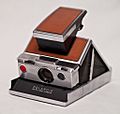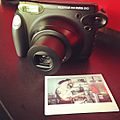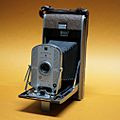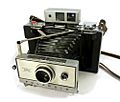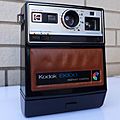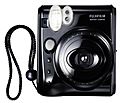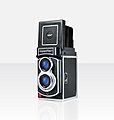Instant camera facts for kids

An instant camera is a special type of camera that can print photos right after you take them! It uses a unique kind of film that develops the picture all by itself. The company Polaroid Corporation was the first to make these cameras popular and easy for everyone to use. Many other companies followed their lead.
The idea for a simple, easy-to-use instant camera came from an American scientist named Edwin Land. He showed off the first commercial instant camera, called the Model 95 Land Camera, in 1948. This was just a year after he first showed off the special instant film in New York City. However, the very first instant camera, which had a camera and a portable darkroom all in one, was invented earlier in 1923 by Samuel Shlafrock.
Why People Use Instant Cameras
Instant cameras have been used for many different things over the years. The main reason they were invented was because Edwin Land's daughter, Jennifer, asked him: "Why can't I see them now?" Many people loved being able to see their photos right away. This also let them take another picture if the first one didn't look quite right.
But instant cameras became useful for other things too! They were used for making ID cards, passport photos, and even pictures from ultrasound scans. Police officers and fire investigators also used them. This was because the instant photos couldn't be changed, which made them good for official records.
Instant Cameras Today
When digital cameras became popular, many people started using them instead of instant cameras. Digital cameras let you see photos instantly on a screen and share them easily. Because of this, instant cameras are now used by fewer people. They are mostly popular with hobbyists and for fun, rather than for things like passport photos, which are now usually taken with digital cameras.
Images for kids
-
Fujifilm Instax 210 with instant photograph
-
Fujifilm FP-14, a passport camera intended to produce four photo portraits of the same subject simultaneously
See also
 In Spanish: Cámara instantánea para niños
In Spanish: Cámara instantánea para niños



